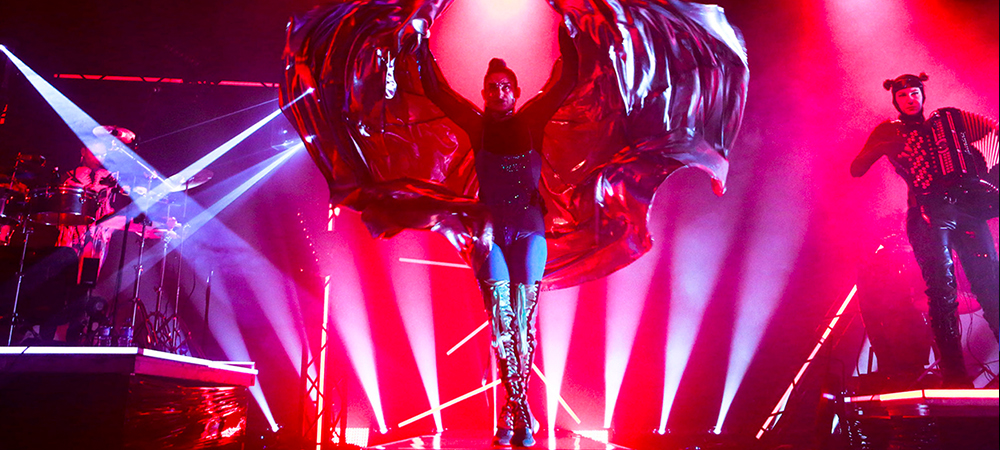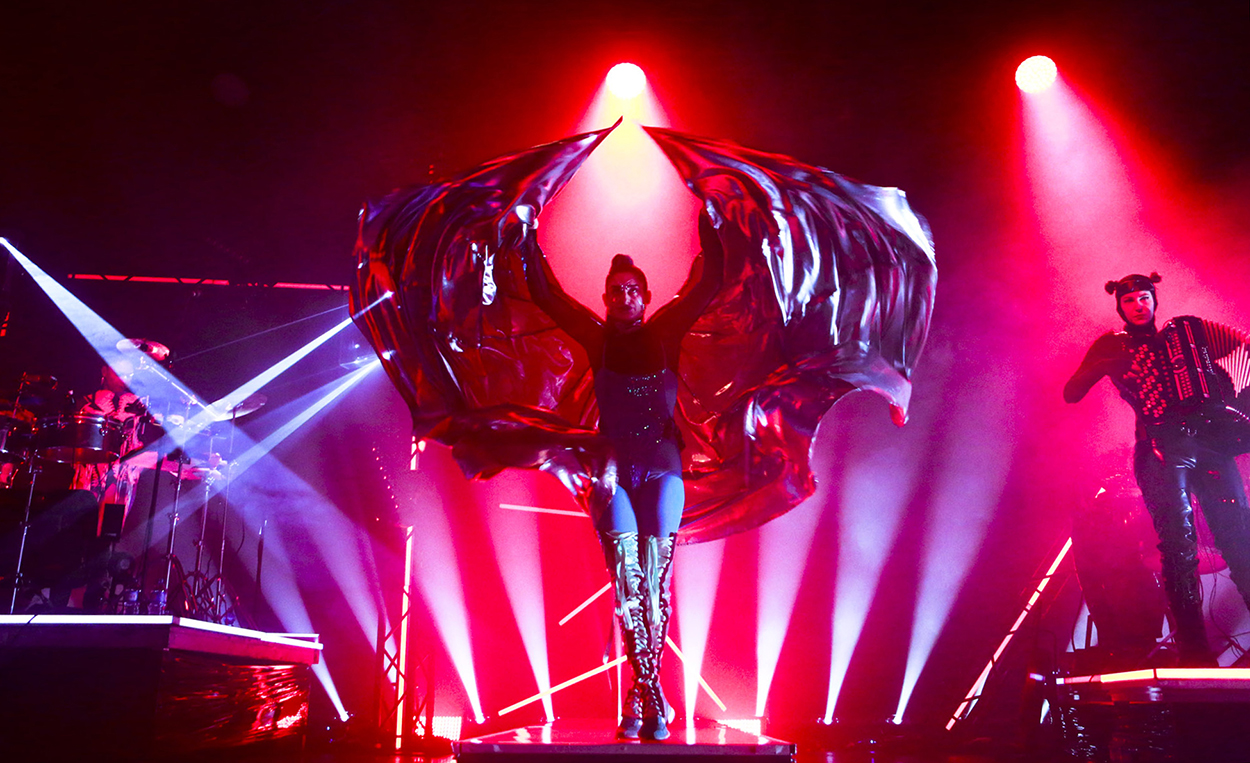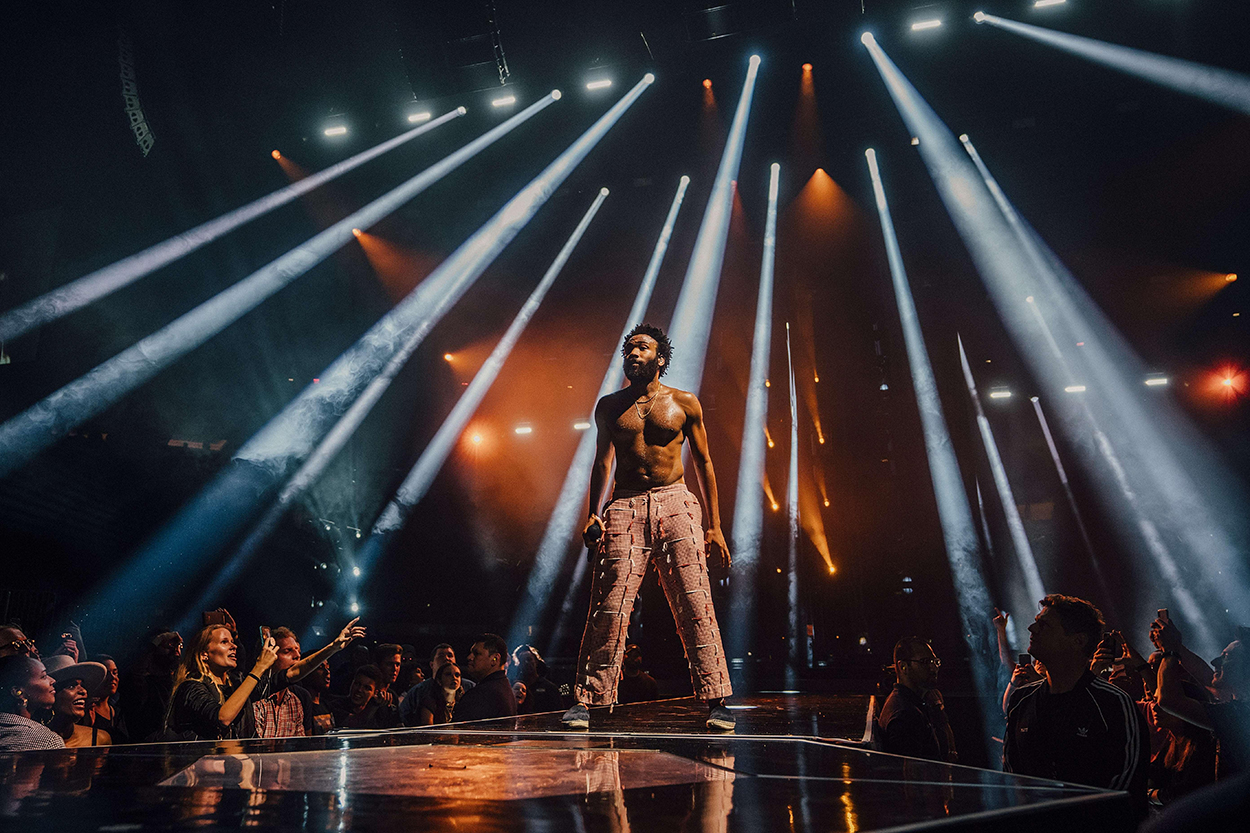Sarah Landau, the woman behind lighting designs for bands like Puscifer, Fever Ray, A Perfect Circle, Childish Gambino, M83 and others, has harmoniously weaved together a passion for seeing the world with a successful career in lighting and production design. Having lived out of a suitcase for almost 15 years, she says her most valuable possession is her freedom. We caught up with her as she traveled to Aswan in Egypt.
These are extraordinary times and people are coping in different ways. What have you been doing to stay sane/positive through this? I went for a brief cave scuba diving trip to Mexico between gigs in early March, and ended up staying there for 6 months. When I was underwater & underground, I forgot about everything but the present moment, instead of worrying about the unknown. Being grateful for experiencing nature on a daily basis was enough to support my mental health, despite feeling quite lost—unable to work or travel.
How has your work been affected and are you working on any projects at the moment? My 2020 tours were canceled of course, and all future potential projects are currently in contingency.
What was your youth like and what did you want to be when you grew up? My family moved around the US every few years and I found quick new friends in the theatre nerds at each new school. I would perform in the school shows and local community productions, and aspired as a teen to live in NYC and be an actress. An inspiring introductory theatre lighting course my first year at Smith College put me behind the scenes and on my current path.
Do you remember when you first became enamored with lighting and what is it about lighting that attracted you? Photography was also a passion of mine back then, my favorite subjects were abandoned buildings and live music—I realize now that it was actually light and architecture I was attracted to capturing in 2D photos. When I first learned how I could create light and space myself, and then use those tools to cultivate and manipulate an audience’s feelings, it felt like a very powerful type of art. I also loved working with a creative team on shows, struggling mightily together for something we would be proud to share.
When you think back on how you learned your craft, what do you see as the most important factor? I am grateful for my early experiences as a tech for other LDs, a house LD, and a touring LD carrying all of my own equipment. Lessons learned the hard way are often the most profound, and I can now also empathize with the variety of professional perspectives on the lighting team. Plus I had incredible opportunities early on to design for artists who simply trusted me to make them look cool, however I felt appropriate. Having complete creative freedom to production-design a show from scratch, no matter the scale, taught me to believe in my instincts.
When you initially sit down to design for a show, what is the first thing you think about or the first step you take? I trust my creative intuition foremost, so I spend time with the music in a meditative space, opening my heart and mind and feeling where the music takes me. The ineffable sensation of being inside an environment where that music “lives” is something that then permeates every consecutive step of my process.
When does fixture choice enter your head? It can be very early on, if I can immediately identify the appropriateness of the look of a particular fixture for that musical space in my mind. Or it’s the last thing, if I just need a light to do a job that I know many fixtures could do, and I let the vendor offer what’s available and most cost effective.
You used a load of Elation IP-rated lights on an online performance by Puscifer from Arcosanti in the Arizona desert. Is designing for an online show any less satisfying than designing for an in-person show or just different? The Puscifer project was my first work in 6 months so the novelty made it all extremely exciting and satisfying. My pre-production process is similar for live events and filmed ones, as creating for multiple camera angles is equal to making sure everyone in a venue has an interesting perspective of the stage. There was just none of the thrill of having an audience witnessing the ephemeral magic of a live, in-person performance. Nevertheless, the feeling of my creative contribution being appreciated and integral to the final product was a blessing that I’ll never take for granted again.
Have you used Elation much in your career? I was always a huge fan of the SixPar for truss warmers and lighting UV scenic elements, and have used Cuepix, Impression washes, and ACLs en masse in the past. Lately I’ve been won over by the Rayzor 760 washes I used for the Puscifer Arcosanti project. They’re the nicest LED wash I’ve used for zoom, brightness, and colors, with the bonus infinite pan/tilt and sparkle effects. All 45 of them held up through weeks of rehearsal and then in dusty and scorching desert conditions without a single issue.
Let’s say you’re having a huge creative block. What do you do to find that new idea or how do you recharge your batteries when you need to? Plant medicines (psilocybin, ayahuasca, marijuana) are rich sources of inspiration themselves, and otherwise they clear my mind to make space for the ideas to come to the surface from my subconscious. Overall, they help me lead a more present and intentional life, freer from anxiety that would hold me back from creating art and appreciating the magic in existence.
From design day one to the final show, what is your favorite part of the process? The shows—especially the ones where the artist is feeling it, the production is flowing seamlessly, and the music and technology are carrying the crowd along on the same wave. Synergy on that scale is a powerful sensation— whether the audience knows it or not, I think that’s what they’re there for, too.
Is there something you’d like to accomplish in this industry that you haven’t yet? My venue bucket list is long and so many still need ticking off: Sydney Opera House, the pyramids in Giza, Royal Albert Hall, Beijing’s Giant Egg, headlining Glastonbury, to name a few—I’ll tour til I get ‘em all!
You're quite a traveler and have seen a lot of the world. Is there a place you could retire to or a place you always return to? Mexico is incredibly diverse and beautiful, and its world-class cave diving will always lure me back. Otherwise, Egypt, New Zealand, and the Canary Islands are some of the few places I’d return to—but there are so many other places I need to go to, for the first time, first!
What do you most look forward to once things are ‘back to normal’? People stopping using all the single-use plastic and disposable PPE for our protection at the cost of the environment’s.
What’s something about Sarah Landau that people might find surprising? I’ve lived out of a suitcase for almost 15 years. When I started touring in 2006, I moved out of an apartment and haven’t had a permanent home for longer than a month, since then. Even in Mexico last year, I changed rentals every month to mimic “travel” and take advantage of rock-bottom rents on waterfront villas. My most valuable possession is my freedom.




